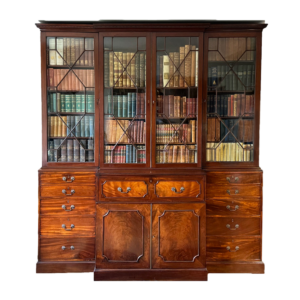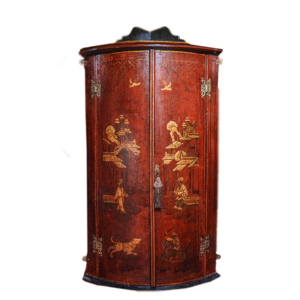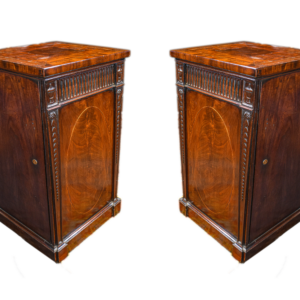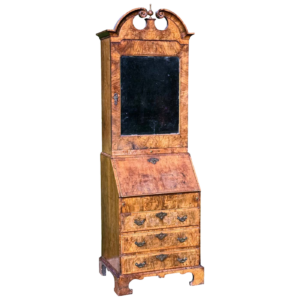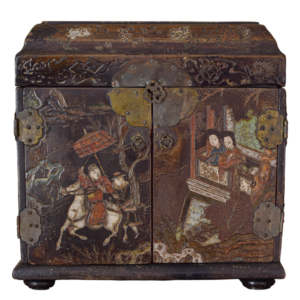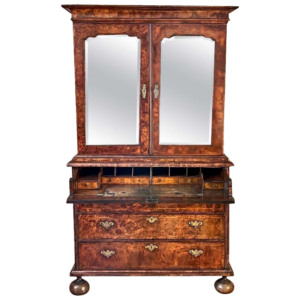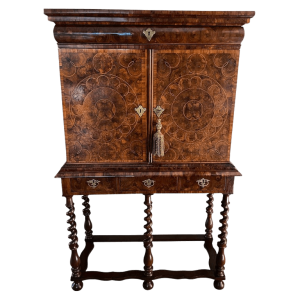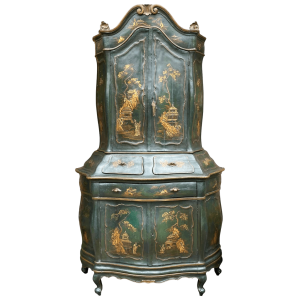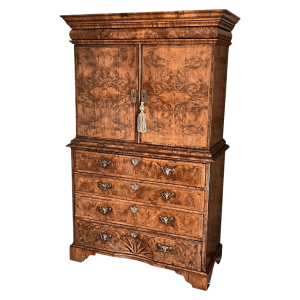Cabinets & Bookcases
17th – 19th centuries
You will find a wide selection of antique cabinets below. Every house will find a use for an antique cabinet; essential for display or storage. At Box House Antiques we particularly like cabinets to be of architectural form and in either walnut or mahogany. An antique cabinet is a cupboard fitted with doors and shelves for storage and or display. These stand against a wall and are usually fitted with a lock. Antique cabinets have been already referred to under 'bureaux’, but antique cabinets appear in numerous forms. With glazed sections these obviously become display cabinets or bookcases, with blind doors this form is usually referred to as a 'cabinet'. In French, glazed antique cabinets are referred to as 'vitrines’: a word that came to be absorbed into the English language. Vitrine is derived from the old French word 'vitre': a pane of glass. A French blind-door cupboard is referred to as an armoire, made in huge numbers in France often with doors converted from the solid to glazed fronts. Press cupboards were produced in large numbers but usually are too large for modern rooms. We saw the 'Badminton Cabinet' sold for £8.58m million in 1990… probably the most expensive antique cabinet ever sold. Early on glazed-top cabinets appeared as the inspiration of, amongst others, the famous diarist Samuel Pepys (1603-1703), and often are referred to as 'Pepysian': usually very low waisted, carved, and with a very tall glazed superstructure able to house and display large collections of antiquarian books. Early versions were made in oak with some very rare versions appearing in walnut. Glazed antique cabinets are often used to display porcelain collections. Dutch antique cabinets often display floral marquetry. In Italy they are more often painted and/or 'japanned', much favoured by interior designers. Nb. Not to be confused with 'cabinet' in the political sense - a group of senior government officials, specialist advisors to their Prime Minister!



